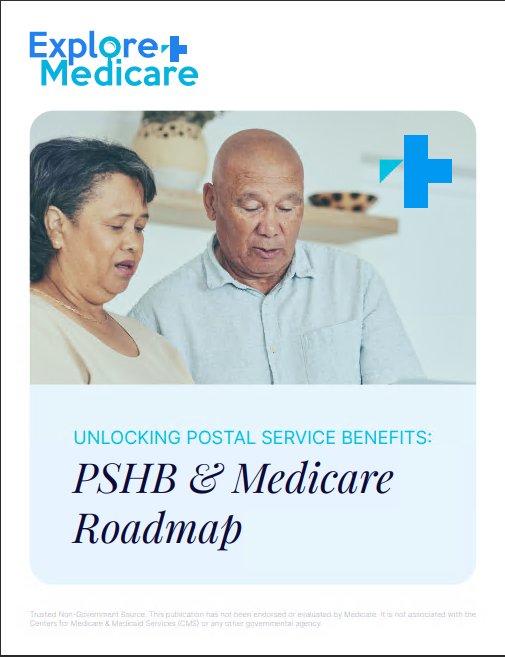Key Takeaways:
-
Medicare’s 2025 changes bring significant updates to prescription drug coverage, including the elimination of the donut hole and a new $2,000 out-of-pocket cap.
-
Understanding the new structure will help you better navigate your costs and benefits for prescription medications throughout the year.
A Fresh Start for Medicare Prescription Coverage in 2025
If you rely on Medicare for prescription drug coverage, 2025 is a game-changing year. With new rules designed to make medications more affordable and predictable, you can finally wave goodbye to the infamous “donut hole” and look forward to a more straightforward system. These changes aim to reduce financial strain and simplify the way costs are managed—but what does it mean for you?
Let’s dive into the updated phases of Medicare Part D coverage, explore the implications of the $2,000 out-of-pocket cap, and look at how these changes affect your healthcare planning.
Breaking Down the New Medicare Part D Structure
Medicare Part D—your prescription drug coverage—now follows a streamlined three-phase structure. This overhaul simplifies the confusing system of the past, making it easier for you to understand and plan your costs.
1. The Deductible Phase
The year begins with the deductible phase. In this phase, you pay the full cost of your medications until you reach the annual deductible limit. For 2025, this maximum deductible is set at $590, though it may vary slightly depending on your plan.
Once your spending hits this amount, you move to the next stage. It’s a good idea to track your spending during this phase so you’re not caught off guard.
2. The Initial Coverage Phase
After meeting your deductible, you enter the initial coverage phase. Here, you’ll share the cost of prescriptions with your plan, typically through copayments or coinsurance. This phase continues until your total prescription spending—including what you and your plan have paid—reaches $5,030.
During this stage, it’s essential to check your plan’s drug formulary (the list of covered drugs) to ensure your medications are included. Different plans may have varying cost-sharing requirements, so keep an eye on how much you’re paying for each prescription.
3. Catastrophic Coverage Phase
Here’s the big news for 2025: once your out-of-pocket costs reach $2,000, you transition directly into the catastrophic coverage phase. At this point, Medicare covers 100% of your prescription drug costs for the rest of the year.
This new $2,000 cap eliminates the need to worry about massive expenses later in the year, offering significant financial relief compared to previous years.
What Happened to the Donut Hole?
If you’ve dealt with Medicare Part D in the past, you’ve likely heard of (or experienced) the dreaded “donut hole.” This coverage gap required beneficiaries to shoulder a significant portion of their drug costs after exceeding the initial coverage phase. Thankfully, 2025 marks the official end of the donut hole.
Now, the transition between phases is smoother, and the $2,000 out-of-pocket cap provides a safety net that the donut hole lacked. This change ensures that once you’ve spent enough to reach catastrophic coverage, you’re fully protected for the rest of the year.
Why the $2,000 Cap Is a Game Changer
The introduction of the $2,000 annual out-of-pocket cap is one of the most impactful updates in Medicare’s history. Here’s why it matters:
-
Predictable Costs: You’ll no longer have to worry about surprise expenses mid-year. Once you’ve spent $2,000 out-of-pocket, your costs for prescription drugs drop to zero for the remainder of the year.
-
Easier Budgeting: Knowing your maximum financial responsibility allows you to plan your healthcare budget more effectively.
-
Better Access to Medications: Without the fear of skyrocketing costs, you’re less likely to skip necessary medications, improving your overall health and quality of life.
New Payment Options for Spreading Costs
Another significant 2025 update is the introduction of a Medicare Prescription Payment Plan. This program allows you to spread out your out-of-pocket drug costs over the calendar year in manageable monthly installments.
For example, instead of paying the $2,000 cap all at once, you can distribute this amount across 12 months. This option is particularly helpful if you have multiple high-cost prescriptions early in the year and need to manage cash flow more effectively.
Talk to your plan’s representative to see if this option is available and how to enroll. It’s a flexible way to keep your finances in check while staying on top of your health needs.
How Does This Affect Medicare Advantage Plans?
If you’re enrolled in a Medicare Advantage plan with prescription drug coverage (often called MA-PD plans), these changes apply to you, too.
-
Standardized Cap: The $2,000 out-of-pocket maximum for prescription drugs applies regardless of whether you’re in a standalone Part D plan or an MA-PD plan.
-
Supplemental Benefits: Many Medicare Advantage plans also offer additional benefits, such as dental, vision, or fitness programs, which can complement your prescription coverage.
As always, be sure to review your Annual Notice of Change (ANOC) to understand how your specific plan implements these updates.
Tips for Maximizing Your Medicare Prescription Benefits
To make the most of these 2025 changes, here are some strategies you can use:
1. Review Your Plan Annually
Even with the new structure, it’s vital to review your plan during Medicare’s Open Enrollment Period (October 15 – December 7). Look for updates to premiums, formularies, and cost-sharing requirements. Switching plans could save you money if your current plan no longer meets your needs.
2. Use Generic Medications When Possible
Generic drugs are often significantly cheaper than brand-name equivalents. Check your plan’s formulary to see if generics are available for your prescriptions, and discuss options with your doctor.
3. Monitor Your Spending
Keep track of your out-of-pocket expenses to know when you’re approaching the $2,000 cap. This can help you anticipate when you’ll enter catastrophic coverage and adjust your budget accordingly.
4. Leverage Extra Help Programs
If you have limited income, you may qualify for programs like Extra Help, which can further reduce your prescription drug costs. Check with Medicare or your local Social Security office to see if you’re eligible.
Common Questions About the 2025 Prescription Coverage Changes
Q: Does the $2,000 cap include premiums?
No, the $2,000 cap applies only to your out-of-pocket costs for covered prescription drugs. Premiums and other non-drug costs are not included in this cap.
Q: How are drug costs calculated toward the $2,000 cap?
Your out-of-pocket costs include amounts you pay toward the deductible, copayments, and coinsurance. Manufacturer discounts during the initial coverage phase also count toward the cap, helping you reach it more quickly.
Q: Do all plans offer the Medicare Prescription Payment Plan?
While this new option is available to many beneficiaries, it may not be offered by every plan. Check with your specific plan to confirm availability and enrollment details.
Stay Ahead of Medicare’s 2025 Changes
With these sweeping updates to Medicare’s prescription drug coverage, you’re in a better position to manage your healthcare costs and get the medications you need without financial stress. The elimination of the donut hole, the $2,000 out-of-pocket cap, and new payment options make 2025 a pivotal year for Medicare beneficiaries.
Take the time to understand how these changes affect your plan, review your options during Open Enrollment, and make informed decisions that align with your healthcare needs. Staying proactive is the key to maximizing your benefits and maintaining your peace of mind.









